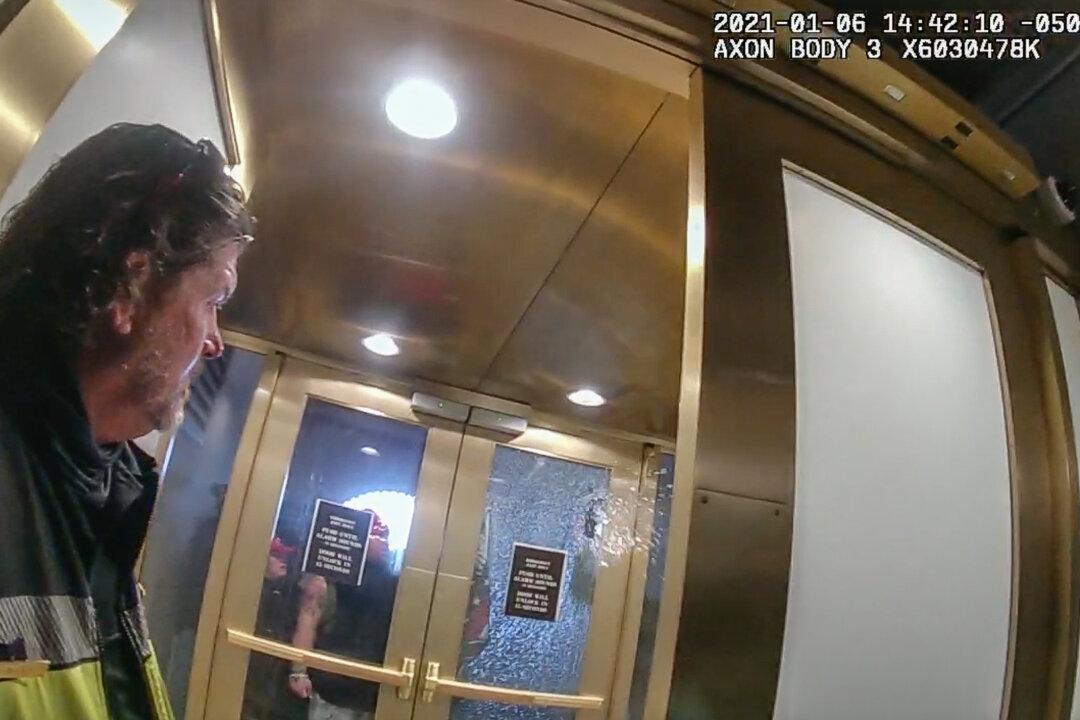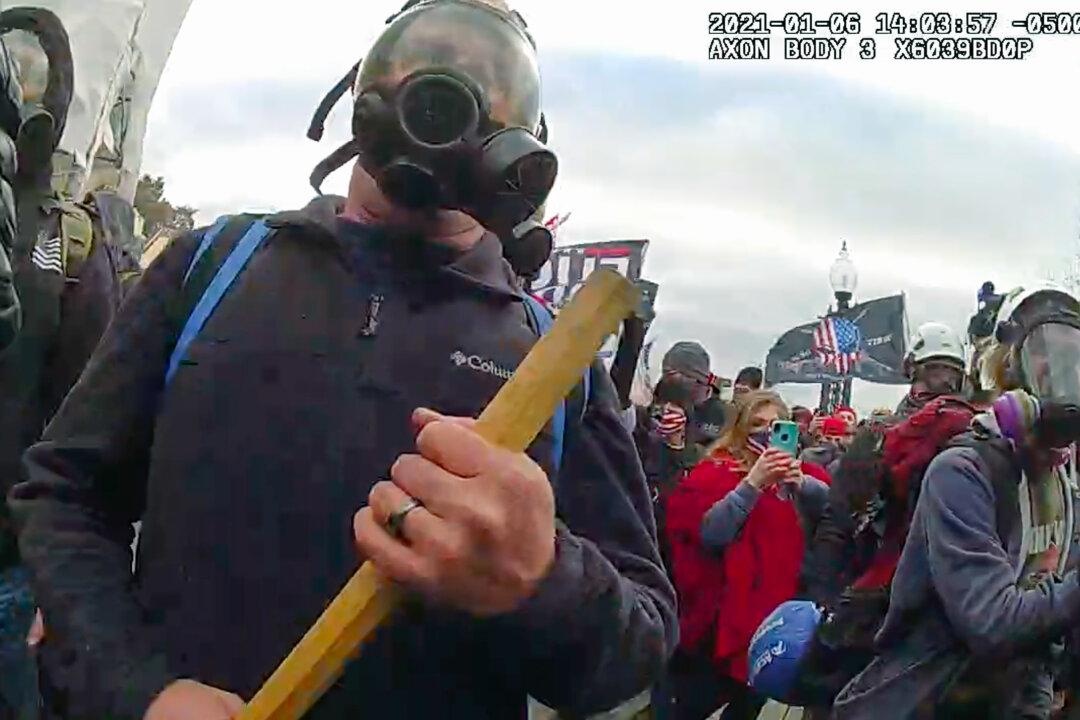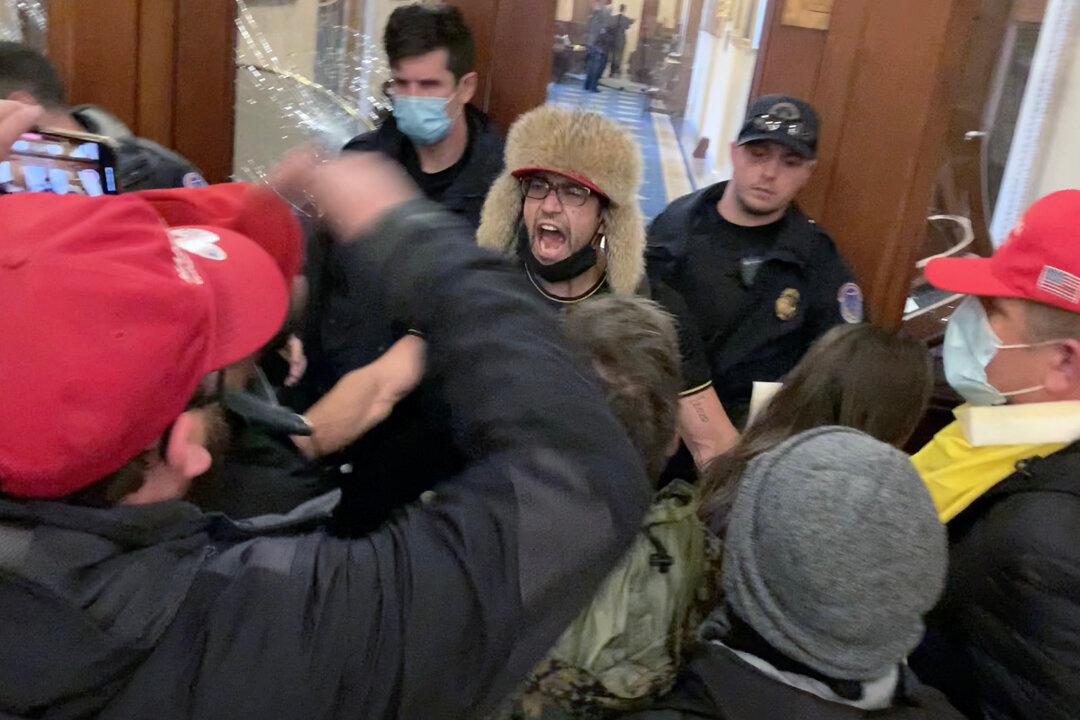Just minutes after misfired tear gas canisters drove police back into the U.S. Capitol on Jan. 6, 2021, the retreating officers left unsecured the sets of double doors in the Lower West Terrace tunnel, giving protesters easy access to the entrance and sparking several hours of brutal violence, videos reveal.
Cell phone video entered into evidence in a recent Jan. 6 criminal case shows that protesters walked right through the sets of double doors at the back of the tunnel and began fighting against the police for access to the rest of the Capitol.





